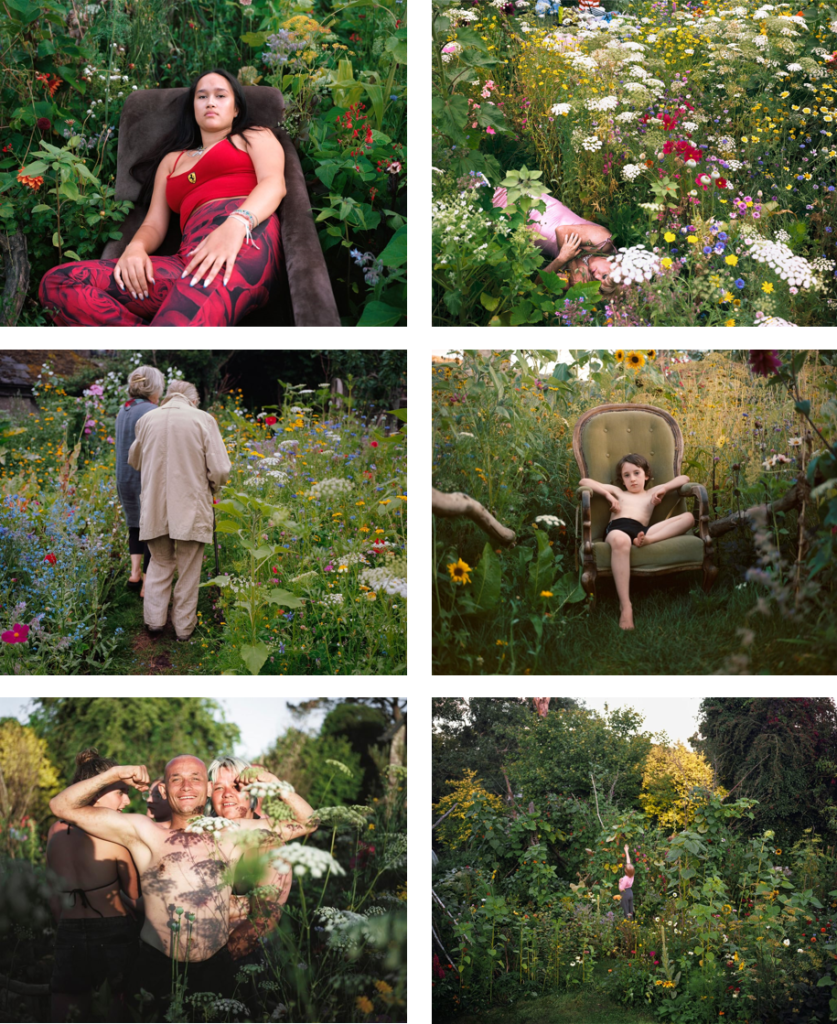
Sian Davey is a British photographer whose work centres around her family, community and herself. She has published multiple books, held solo exhibitions, and accepted awards for her work. Davey was a psychotherapist before taking up photography in 2014, where she focused her work on those close to her, creating a deep sense of connection with her work. Davey is most renowned for her intimate and deeply personal approach to photography. Davey’s style is documentary-based, yet it conveys a strong emotional connection with her subjects, offering a sensitive and reflective portrayal of their lives.
Davey’s background in psychotherapy deeply influences her approach to photography. Her work isn’t just about capturing images but about understanding human connection, emotion and vulnerability. The Garden is a project that is both personal and communal. The idea originated during a time of emotional transition when her son Luke suggested that they transform their garden, mirroring their own personal healing.
Her project ‘The Garden’ consists of images taken in her own garden where she transformed it grow bold, colourful plants like mullein, poppies, sunflowers and more. As the garden flourished, it began to attract communities of people – mothers, daughters, grandparents, teenagers etc. Davey photographed the visitors amidst the vibrant plants capturing moments of joy, vulnerability and connection. The visitors of the garden weren’t just there to pose for photos, it was a chance for them to interact and experience the surrounding nature and to become a part of the story. She described the garden as evolving into “an expression of joy, interconnectedness, yearning, sexuality, and defiance” serving as a metaphor for the human heart. The Garden also symbolises growth, renewal, and the cycles of life. The transformation of an overgrown space into a thriving wildflower sanctuary mirrors personal transformation and resilience.
Davey’s photographic style consists of working with natural sunlight, enhancing the dreamlike and organic feel of her images. She also uses a shallow depth of field which isolates the subjects against a textured background of flowers and foliage. This creates a sense of intimacy and emotional depth, drawing the viewer’s attention to the focal point, the human presence within the landscape. Some of her images feature close, intimate framing, making the viewer feel as though they are physically in the garden with the subject. Whereas, others use wider framing, allowing the garden to play a dominant role in the storytelling, emphasising the relationship between people and nature.
